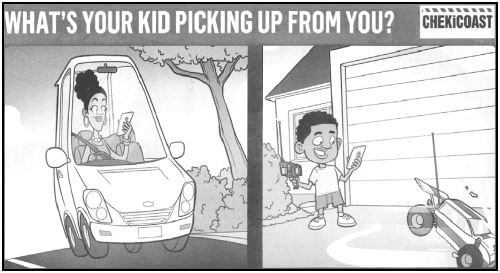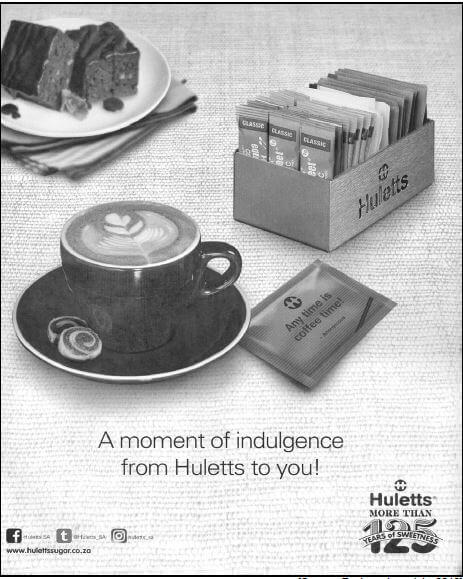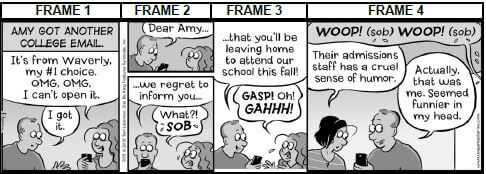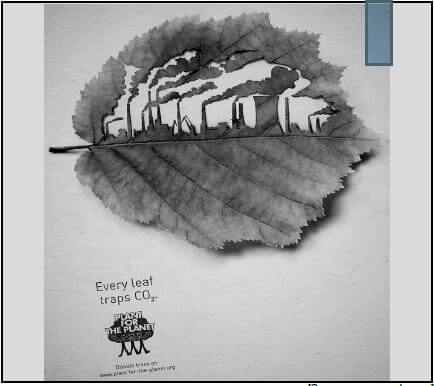ENGLISH FIRST ADDITIONAL LANGUAGE PAPER 1 GRADE 12 QUESTIONS - NSC EXAMS PAST PAPERS AND MEMOS NOVEMBER 2018
Share via Whatsapp Join our WhatsApp Group Join our Telegram GroupENGLISH FIRST ADDITIONAL LANGUAGE
PAPER 1
GRADE 12
NSC EXAMS
PAST PAPERS AND MEMOS NOVEMBER 2018
INSTRUCTIONS AND INFORMATION
- This question paper consists of THREE sections:
SECTION A: Comprehension (30)
SECTION B: Summary (10)
SECTION C: Language (40) - Answer ALL the questions.
- Read ALL the instructions carefully.
- Start EACH section on a NEW page.
- Leave a line after each answer.
- Number the answers correctly according to the numbering system used in this question paper.
- For multiple-choice questions, write only the letter (A–D) next to the question number in the ANSWER BOOK.
- Pay special attention to spelling and sentence construction. 9. Use the following time frame as a guideline:
SECTION A: 50 minutes
SECTION B: 20 minutes
SECTION C: 50 minutes - Write neatly and legibly.
QUESTIONS
SECTION A: COMPREHENSION
QUESTION 1
Read BOTH TEXT A and TEXT B and answer the set questions.
TEXT A
SOLE-SEARCHING
[Adapted from Sunday Tribune, 24 September 2017] |
Glossary:
- endorsement¹: showing one's public approval or support of a product or a brand. 1.1 Refer to paragraph 2.
1.1.1 Quote TWO consecutive words which indicate that sneakers were first used by athletes. (1)
1.1.2 Using your OWN words, explain why this type of footwear was named sneakers. (2)
1.2 What does the writer mean by, 'turned into a mass consumer movement' (line 12)? (2)
1.3 Explain why the following statement is FALSE: Sneakerheads is a brand of footwear. (1)
1.4 Refer to paragraph 5. Give TWO reasons why Converse added the name of celebrity basketball player, Chuck Taylor, to their sneakers. (2)
1.5 How did the music industry make sneakers popular (paragraph 6)? (2) 1.6 Choose the correct answer to complete the following sentence: The word 'coolest' (line 28) means …
- calmest.
- trendiest.
- coldest.
- youngest. (1)
1.7 Name TWO types of media used to influence the sale of sneakers (paragraph 8). (2)
1.8 Refer to paragraph 9.
1.8.1Which word in this paragraph means the same as 'follower'? (1)
1.8.2 What does Naledi Radebe mean by 'sneakers are a form of transport' (line 40)? (2)
1.9 Refer to paragraph 10.
1.9.1 How do you, as the reader, know that the promotion of sneakers on the internet is a fairly recent practice? (1)
1.9.2 Identify a social media app (application) mentioned in this paragraph. (1)
1.10 What are the benefits of buying sneakers online? State TWO points. (2)
1.11 Briefly discuss whether you agree with the writer's view expressed in paragraph 13. (2)
1.12 Discuss the suitability of the title, 'Sole-searching'. (2)
TEXT B 
[Source: Investing in Road Safety, 2018]
1.13 What is the woman doing? State TWO actions. (2)
1.14 How do the actions of the boy support the words, 'What's your kid picking up from you?' (2)
1.15 In your opinion, does this text succeed in conveying its message? Substantiate your response. (2)
TOTAL SECTION A: 30
SECTION B: SUMMARY
QUESTION 2
Oral hygiene is important for overall good health.
Read TEXT C below and list SEVEN tips on how to keep your teeth healthy.
INSTRUCTIONS
- Your summary must be written in point form.
- List your SEVEN points in full sentences, using no more than 70 words.
- Number your sentences from 1 to 7.
- Write only ONE point per sentence.
- Use your OWN words as far as possible.
- Indicate the total number of words you have used in brackets at the end of your summary.
TEXT C
KEEPING YOUR TEETH HEALTHY Healthy teeth require a commitment to a strict daily routine. It is important to brush your teeth in the morning and again before you go to bed. [Adapted from B–Living, Issue 1, 2018] |
TOTAL SECTION B: 10
SECTION C: LANGUAGE
QUESTION 3: ANALYSING AN ADVERTISEMENT
Study the advertisement (TEXT D) below and answer the set questions.
TEXT D 
[Source: Equinox, June-July, 2018]
3.1 To whom would this advertisement appeal? (1)
3.2 The box to the right of the cup contains sachets of sugar as well as artificial sweeteners. Why has the advertiser included artificial sweeteners? (1)
3.3 Refer to the headline, 'A moment of indulgence from Huletts to you!'
3.3.1 Choose the correct answer to complete the following sentence:
In the context of the advertisement, the word 'indulgence' means …
- tolerance.
- sympathy.
- understanding.
- enjoyment. (1)
3.3.2 How do the visual aspects support the headline, 'A moment of indulgence from Huletts to you!'? (3)
3.4 Why has the advertiser included the words, 'MORE THAN 125 YEARS OF SWEETNESS'? State TWO points. (2)
3.5 Does this advertisement convince you to purchase Huletts products? Substantiate your answer. (2) [10]
QUESTION 4: ANALYSING A CARTOON
Read the cartoon (TEXT E) below and answer the set questions.
TEXT E
THE PAJAMA DIARIES 
[Source: www.the pajama diaries.com]
NOTE: In this cartoon, the girl in the first three frames is Amy, the man is her father and the woman in frame 4 is her mother.
- * '#1' in frame 1 means number 1.
- * The word 'fall' in frame 3 refers to autumn.
4.1 Refer to FRAME 1.
4.1.1 Choose the correct answer to complete the following sentence:
Amy's facial expression indicates that she is …
- angry.
- anxious.
- annoyed.
- aggressive. (1)
4.1.2 Give TWO reasons for your answer to QUESTION 4.1.1. (2)
4.1.3 Write the abbreviation of 'OMG' in full. (1)
4.2 Why is the word 'SOB' written in bold font in frame 2? (1)
4.3 Refer to FRAME 4.
4.3.1 How does the cartoonist use a verbal clue to convey the mother's feelings in this frame? (2)
4.3.2 Rewrite the word 'humor' as it is spelt in South African English. (1)
4.4 Refer to the cartoon as a whole. Do you think that this cartoon is humorous? Substantiate your answer. (2) [10]
QUESTION 5: LANGUAGE AND EDITING SKILLS
5.1 Read the passage (TEXT F) below, which has some deliberate errors, and answer the set questions.
TEXT F
EMOJIS
[Adapted from www.newscientist.com] |
5.1.1 Correct the SINGLE error in each of the following sentences. Write down ONLY the question numbers and the words you have corrected.
- What is the diferrence between emojis and emoticons? (1)
- Emoticons such as the smiley or crying face is formed from typographical marks. (1)
- Smileys have nudged out abbreviations with similar meanings, such has 'lol'. (1)
- Unlike many abbreviations, which can be language specific, emojis are instant recognisable to Instagram users worldwide. (1)
5.1.2 Write '1 900' in words. (1)
5.1.3 Rewrite the following sentence in the active voice: A language is not constituted by emojis. (1)
5.1.4 Give an antonym for the underlined word in the following sentence: They have no grammar, so we cannot combine them into more complex units of meaning. (1)
5.1.5 Complete the following tag question. Write down ONLY the missing words. Emojis help us navigate the personal relationships we conduct online, … …? (1)
5.1.6 Combine the following sentences into a single sentence: Siyabonga sent his mother a smiley emoji. His mother responded with a heart emoji. Begin with the following word: When … (2)
5.1.7 Rewrite the following sentence in reported speech: Elize said, 'I used emojis yesterday.' (4)
5.2 Study the text (TEXT G) below and answer the questions.
TEXT G 
[Source: www.google.com]
NOTE: CO2 refers to carbon dioxide.
5.2.1 Rewrite the following sentence in the present continuous tense: Every leaf traps CO2. (1)
5.2.2 Study the following statement: Plant for the planet. State the part of speech of each of the underlined words. (2)
5.2.3 Provide the correct degree of comparison in the following sentence: Air pollution is (bad) now than what it was a decade ago. (1)
5.2.4 Give the correct form of the word in brackets: The learners are excited about the (donate) of trees to the school. (1)
5.2.5 Rewrite the following sentence in the negative form: The leaves fell off the tree during autumn. (1) [20]
TOTAL SECTION C: 40
GRAND TOTAL: 80